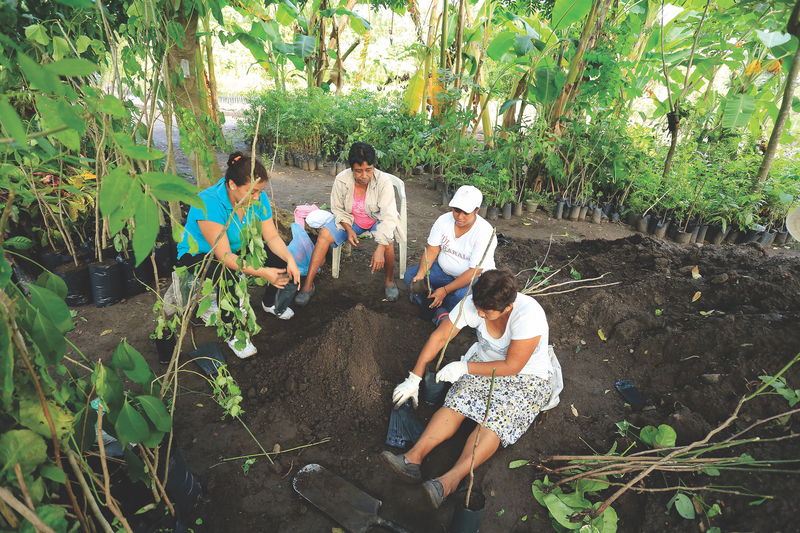Mexican women share traditional knowledge on medicinal plants
2021/03/09
 Women working at the El Piñonal nursery in Jamapa, Mexico. Photo: G. Sánchez-Vigil
Women working at the El Piñonal nursery in Jamapa, Mexico. Photo: G. Sánchez-Vigil
Women in the municipality of Jamapa in the state of Veracruz, Mexico, published a manual on medicinal plants to help disseminate their traditional knowledge on non-timber forest products. The publication is an output of an ITTO project to assess the value of ecosystem services provided by coastal forests in Mexico.
The manual (available in Spanish) compiles information on 44 plants and their uses in traditional medicine in rural areas of Veracruz, although many of the plants also grow in other parts of Mexico and in other countries. The illustrated manual contains information on the scientific and common names, the parts of the plant that can be used, the diseases that can be treated with each plant, how to prepare remedies, where the plants are found, and other features.
For example, infusions of the leaves of avocado trees (Persea americana) are used to treat cholesterol and diabetes; the bark of red cedar (Cedrela odorata) can be applied as a treatment of hernias and cysts; and the fruit of cuajilote (Parmentiera aculeata) can help reduce kidney pain.
The information contained in the manual was compiled by Grupo de Mujeres del Vivero de El Piñonal (a local women’s group), and members of the ITTO project at Instituto de Ecología identified the species and validated the information. The manual is a significant scientific work as well as reflective of the traditions of the community.
The El Piñonal women’s group also established a nursery under the project to propagate local medicinal plants and other valuable tree species used in the region.

